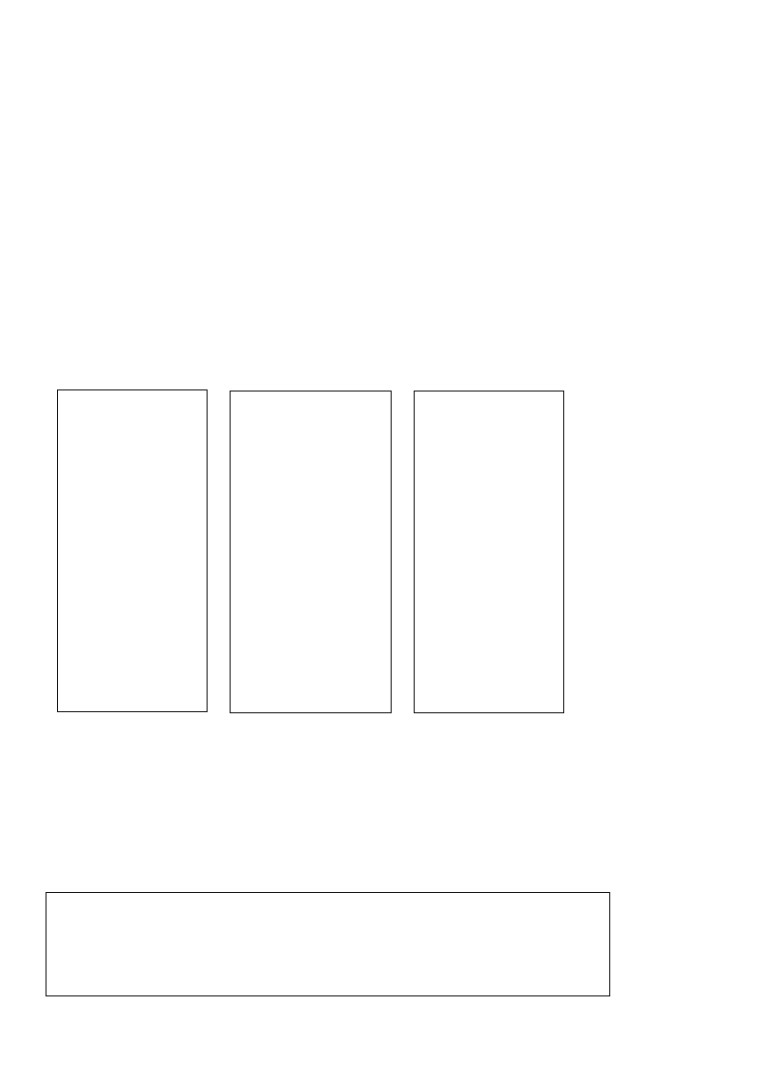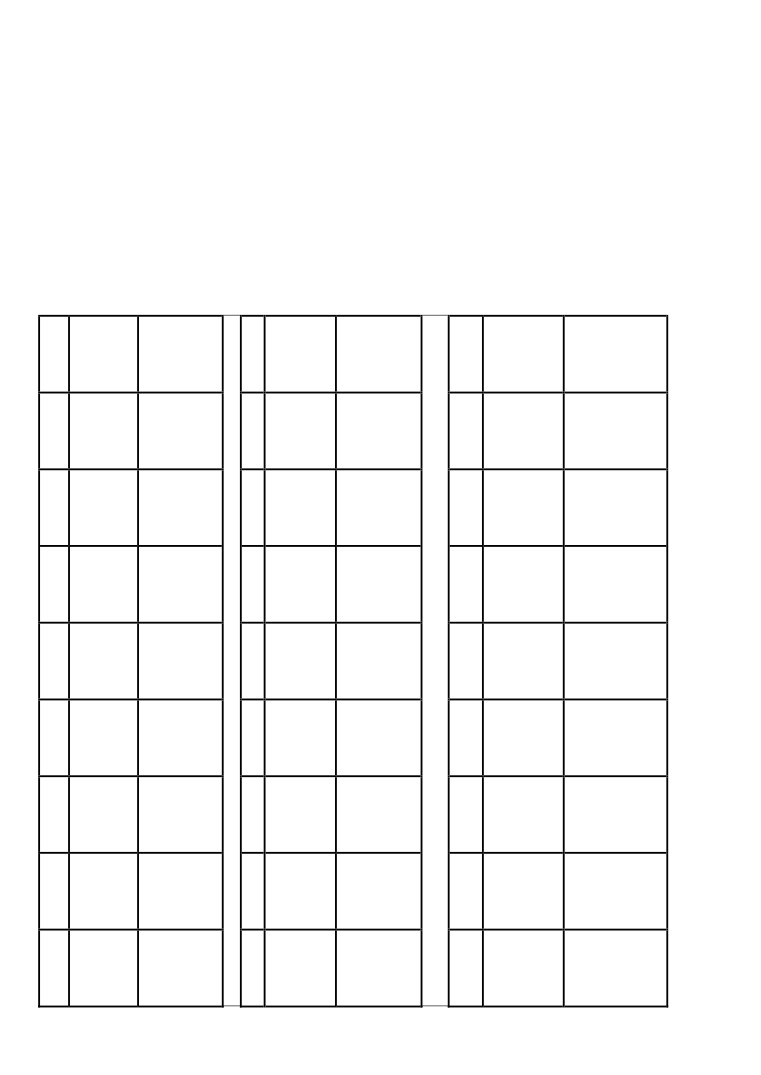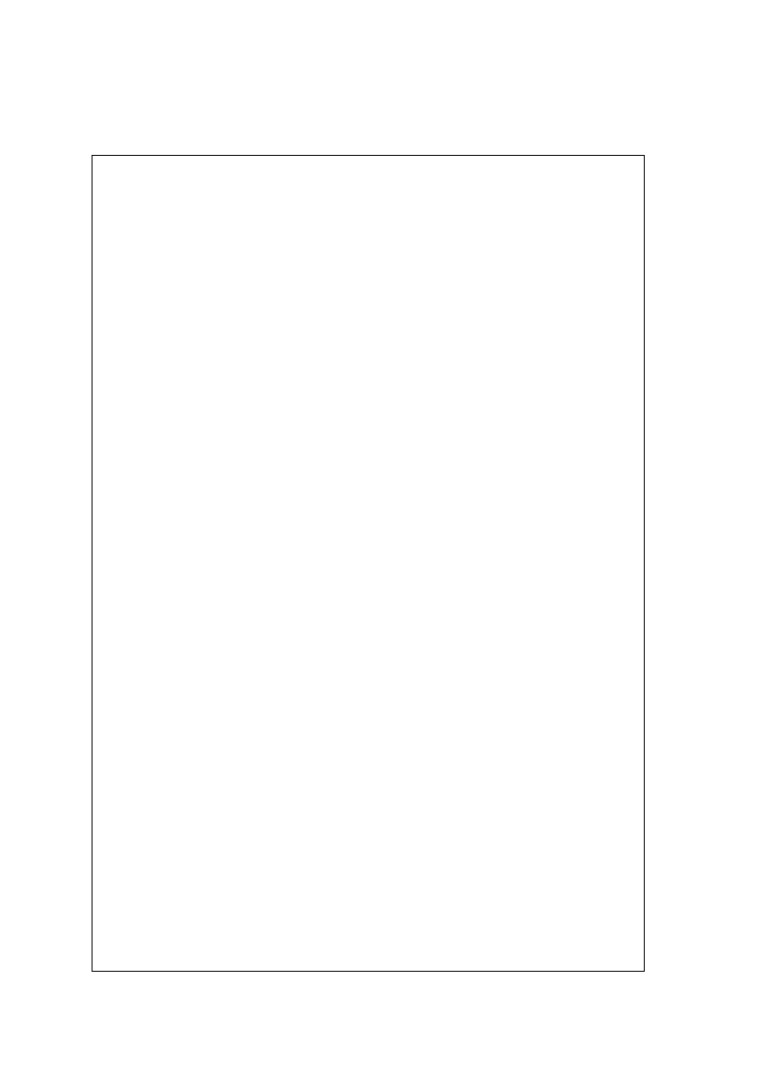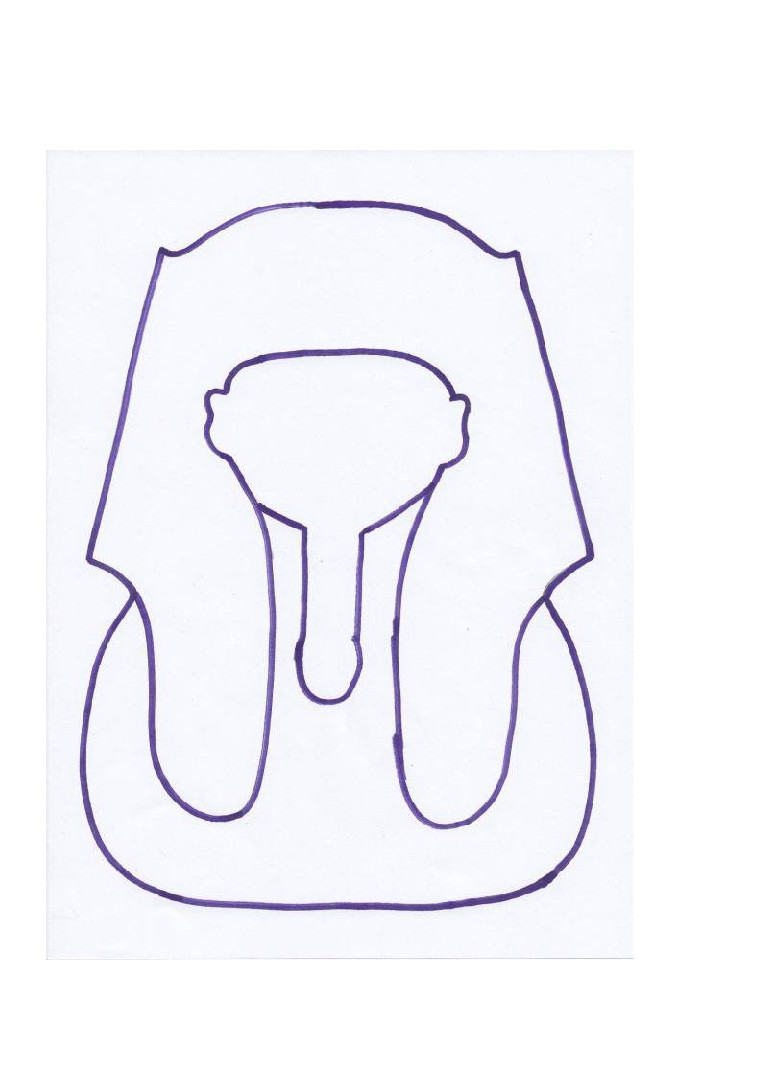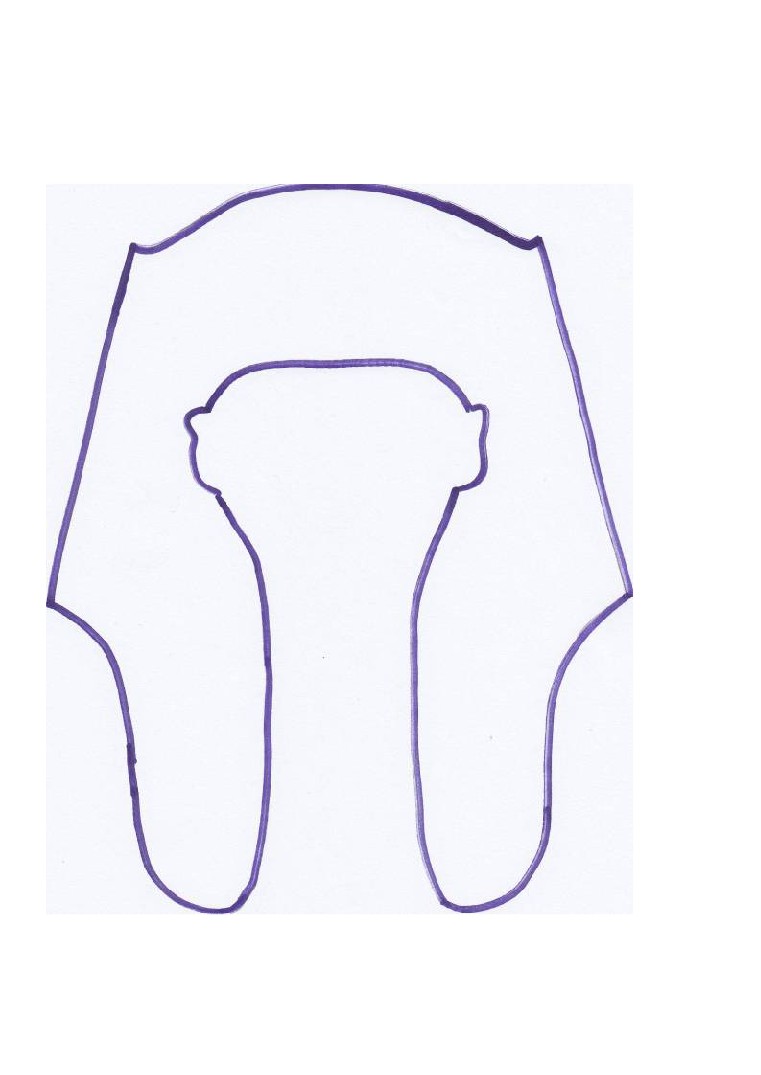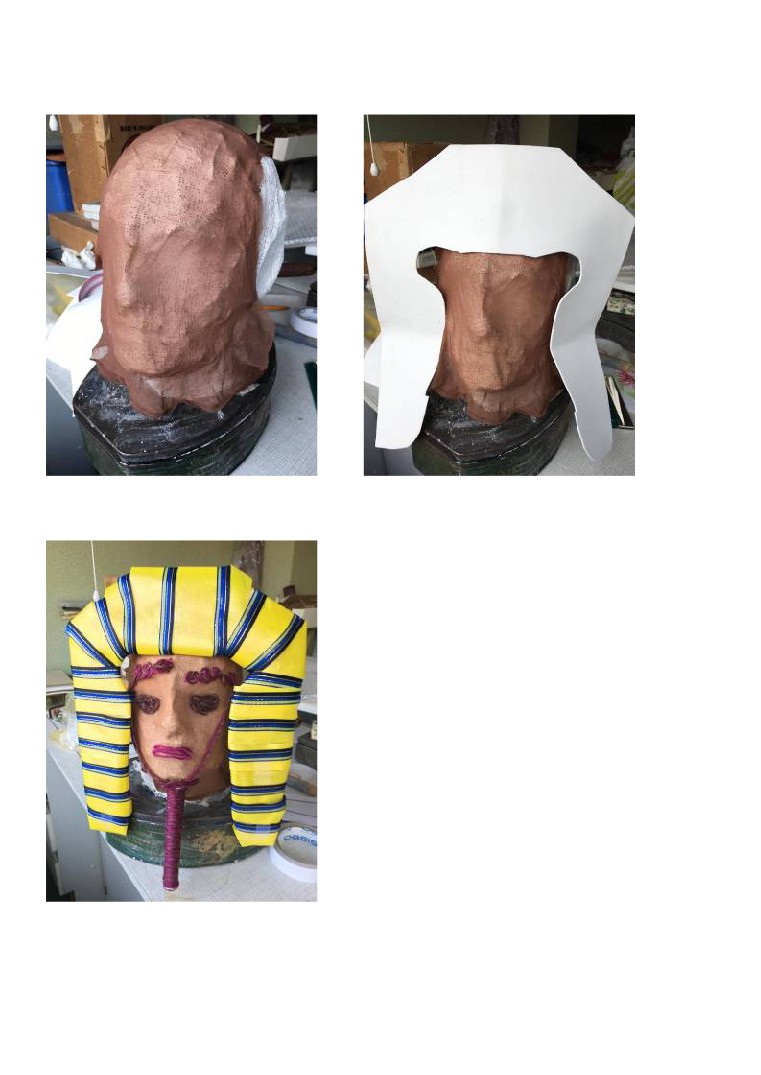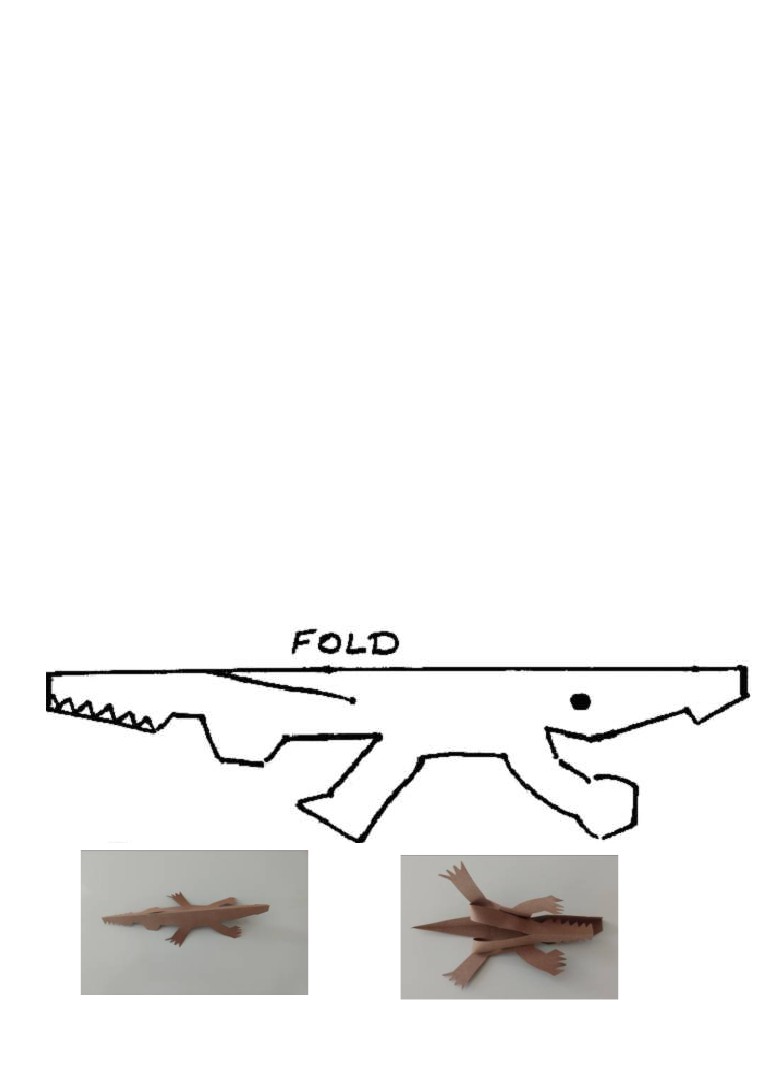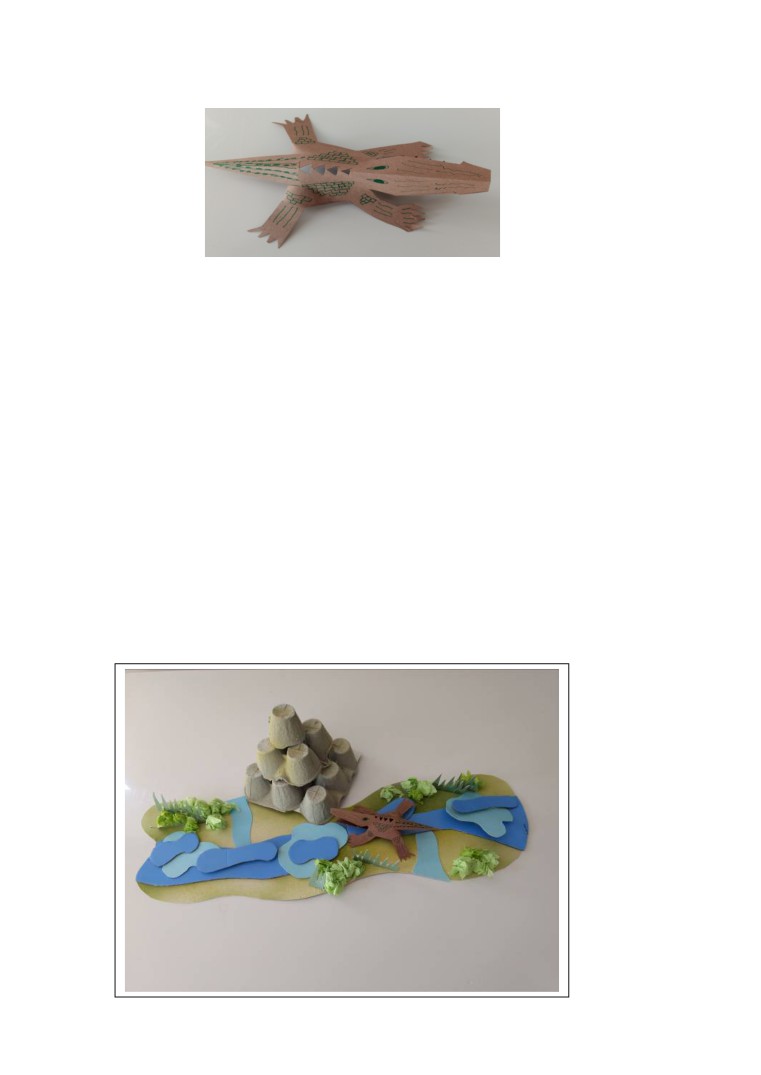An idea from Auntie Gill gill@gillmcgregor.com
Auntie Gill Says…….
“Let’s look at the Ancient Egyptian civilisation”
Key Stage 2
5,000 years ago in Egypt, which is in North Africa, the Ancient
Egyptians started to build villages along the River Nile. The Ancient
Egyptians were ruled by kings and queens called Pharaohs. This
civilisation lasted 3,000 years.
Ask an adult to show you on a world map how far Egypt is away from the
UK.
Farming in Ancient Egypt
As most of Egypt is desert and has a very hot climate, the villages were built along the River Nile
so the river could provide the water to grow crops like wheat and barley. Because each year the
River Nile would flood, the flooding of water made the land fertile and able to grow fruit and
vegetables to eat. Flax was grown to make clothes and Papyrus to make paper.
Flax
Papyrus
Try and find pictures
of Flax and Papyrus and
draw an example of each
in the boxes.
Access to food was often dependent upon how rich the Ancient Egyptians were, the rich (like
Pharaohs) ate meat, eggs, figs and grapes whilst poorer people ate bread and onions.
Draw 2 plates of food. One plate to show what you think a Pharaoh would eat and the
other plate is your favourite meal. What are the differences between the 2 plates of
food?
What I like to eat
What I think rich Ancient Egyptians
liked to eat.
1
An idea from Auntie Gill gill@gillmcgregor.com
The Ancient Egyptians were skilled farmers and their farming was based around the 3 seasons
of the Egyptian calendar which were called: Akhet, Peret and Shemu.
Akhet was the season when the farmland was flooded by the Nile, for up to 2 metres in depth,
due to the heavy summer rains in the highlands of Ethiopia which caused the Nile, winding its
way through Egypt, to flood.
During the season of Peret, the Nile flood waters went down and made the surrounding land
fertile as it was covered in a thick, dark mud. Therefore the Ancient Egyptian farmers were able
to plant fruit, vegetables, wheat and barley crops.
Shemu was the season when the Ancient Egyptians harvested their crops, fruit and vegetables.
The grain crops of barley and wheat were stored in large storage areas called silos. Seeds were
also gathered and stored for the next year’s crop planting.
Draw a picture to represent each season of the Egyptian Calendar
Ahket
Peret
Shemu
Egyptian farmers dug channels and built walls leading from the River Nile to transport the flow
of the Nile’s water. They did this to make sure the land was made fertile during Ahket; the
flooding season providing water for farming. They also diverted the flood waters away from
cities and houses. This system was called basin irrigation.
To raise and move water from the channels and the River Nile, the Ancient Egyptians invented
tools like the shaduf. A shaduf is a long pole with a bucket attached to the end. They would fill
the bucket with water to carry to the farmland by its stick to water the crops.
Draw a shaduf in the box below
2
An idea from Auntie Gill gill@gillmcgregor.com
Ancient Egyptian Religion
Religion was extremely important to the Ancient Egyptians, so the priests were held in high
esteem. The Ancient Egyptians believed in never ending after life and the Pharaohs spent much
time planning for their death.
The Ancient Egyptians worshipped over 2,000 gods and goddesses.
They believed that Gods created the universe, maintained order and were involved in day to
day life. The Ancient Egyptians believed that in the past there had been only disorder and
turmoil and out of the disorder and chaos a hill appeared, called Benben, with the first god
Atum sitting on the hill. Because he was alone he created 2 children called Shu and Tefnut who
went away to create the world.
Because Shu and Tefnut had been away for a long time, their father Atum, sent his eye to look
for them. The eye found them, so they went back to their father and gave him his eye. Atum
was so happy that his eye started to cry and its tears fell to the earth on the hill and from the
tears the first humans were created.
Draw a picture of what you think Atum, Shu and Tefnut looked like with the tears of
Atum’s eye becoming humans.
You will need to research how you think they looked to be able to make the picture look
as realistic as possible.
3
An idea from Auntie Gill gill@gillmcgregor.com
The Hieroglyphic Alphabet
The Ancient Egyptians invented a writing system called hieroglyphs which were written by
Scribes. The Hieroglyphs included around 700 different signs of objects and animals. Some signs
were pictorial or symbolic and stood for whole words. Some signs were phonetic, which means
they stood for sounds. As it was complicated to produce the scribes had to attend a special
training school.
Hieroglyphs could be written vertically, horizontally, left to right, or right to left! The phonetic
hieroglyph alphabet is the closest version to our modern English alphabet. It is not exactly the
same because the ancient Egyptians did not have symbols for vowels (‘a’, ‘e’, ‘i’, ‘o’ or ‘u’), but
the alphabet did include vowel sounding hieroglyphs.
Complete the table below by researching the pictorial images of a hieroglyphic alphabet
A
Vulture
B
Leg
C
Cup
D
Hand
E
Feather
F
Viper
G
Pot
H
Wick
I
Feather
J
Cobra
K
Basket
L
Lion
M
Owl
N
Water
O
Chick
P
Stool
Q
Hill
R
Mouth
S
Cloth
T
Loaf
U
Chick
V
Viper
W
Chick
X
Cloth
Y
Feathers
Z
Bolt
4
An idea from Auntie Gill gill@gillmcgregor.com
Make a poster using the hieroglyphic alphabet, create a border all the way
round which has an Egyptian theme.
Write what the poster says in English underneath
5
An idea from Auntie Gill gill@gillmcgregor.com
Housing and Jobs in Ancient Egypt
The Ancient Egyptians were skilled builders. Through the study of Egyptology, Egyptologists
have been able to excavate the remains of buildings, monuments, pyramids, objects and
mummies.
The Egyptologists have discovered the remains of houses which were built of bricks made from
mud with no floor covering other than earth on the floor. Houses were built with separate
rooms; living rooms with stone seats, bedrooms and a kitchen with a stone oven heated by fire.
As there were no refrigerators, pits were dug in the ground to store food, as below ground level
was cooler.
Pretend you’re an Egyptologist and discover the remains of an Ancient Egyptian mud
house. Research via the web. Draw and colour an example of a mud house.
Many Ancient Egyptians had jobs. There were priests, doctors, scribes, merchants, bakers,
farmers, craftsmen, and many more. A trade or job was often handed down from father to son.
There was no schooling during these times so children had jobs too.
There were also craftsmen who made board games which the adults played. The game craft
makers made dice in order to play games of chance, as the element of chance symbolised that
their fate was in the hands of the gods.
Draw a picture of 2 Ancient Egyptian men playing a board game in the box below.
An idea from Auntie Gill gill@gillmcgregor.com
The Pharaohs and Mummies
During the Ancient Egyptian civilisation of some 3,000 years there were 170 Pharaoh rulers.
They were both men and women. Some were much loved by the Ancient Egyptians as they
were good to their people and so the people were able to enjoy good life and prosperity. Other
Pharaohs were not so good to their subjects and so the ancient Egyptians suffered famine and
they experienced invasion from other ancient civilisations and war.
We have learnt that religion was very important to the Ancient Egyptians. They believed in
never ending after life and spent time planning for their death. This is why the Pharaohs
organised the building of pyramids by their skilled builders whilst they were still alive. These
pyramids were a special tomb where the Pharaoh and important people would be buried in and
would be filled with their favourite belongings, even their favourite cats.
Because some of the pyramids were broken in to and the expensive belongings and artefacts
stored inside stolen, the Pharaohs began to have their pyramids built in the Valley of Kings.
They believed that when a person died their soul stayed alive and travelled to the after life to
live again forever. They also believed the soul could return back into the body which is why they
mummified the bodies to keep them looking good.
To preserve the dead Pharaoh’s body and those who were important to the Pharaoh- the
bodies were preserved through mummification.
The brain was removed by a hook that went up the nose to take out the brain and the insides of
the body apart from the heart were removed by making a cut in the left side of the body with a
piece of volcanic glass (obsidian) before taking out the insides. These body organs were then
stored in Canopic jars which were made from carved limestone or pottery. The heart stayed
inside the body as they believed it was like the brain and allowed the Ancient Egyptians to think,
to feel and was the seat of learning. The body was then dried with a salt called Natron for 70
days.
The mummified body was dressed with beautiful gold jewellery, necklaces and amulets
decorated with jewels as lucky charms of the gods they had worshipped to help protect them
during their dangerous journey to the after life.
A heart scarab was often positioned just above the heart as they believed the afterlife would
judge the pharaohs for any wrong doing they may have committed and the heart scarab helped
to prevent the heart from answering. Once adorned the body was tightly wrapped in linen strips
around 200 metres in length. The wrapped bodies were then ready for the after life and placed
in decorative coffins which were placed in their tombs
Tutankhamun is one of the most famous Pharaoh’s we know of in Ancient Egyptian history.
He commenced his rule at around the age of 8 years old and reigned for 10 years before he died
at the age of 18. He was buried in a tomb in the Valley of the Kings.
His burial place was hidden for many centuries. It was discovered by the Egyptologist Howard
Carter in 1922. It contained many amazing artefacts, including Tutankhamun’s famous golden
death mask, a chariot and a dagger made from meteorite iron!
7
An idea from Auntie Gill gill@gillmcgregor.com
Using this outline, colour an Egyptian Death mask. Or you can make a raised headdress
by overlaying the headdress template which is on the next page.
8
An idea from Auntie Gill gill@gillmcgregor.com
Cut out and colour to overlay this headdress over the template of the previous page.
Use rolled cardboard strategically at the back to give a raised definition.
Do research to see what colours the Egyptian death masks were.
9
An idea from Auntie Gill gill@gillmcgregor.com
Or you can make a 3D model like this example-
Using a polystyrene head- cover with an
Using a sheet of craft foam cut out
old pair of tights and attach to a base.
the head dress shape.
Pad out the front of the foam sheet headdress by
attaching rolled bubble wrap with sticky or double
sided tape to the foam headdress shape, to give it
greater definition.
Using ribbon or similar material 5cms wide - cut
into enough strips to cover the front of the bubble
wrapped headdress- The strips must be long
enough to go round to the back to be able to be
secured with sticky or double sided tape. Try to
get the edges to be very close together.
Find some attractive ribbon of make decorative
stripes and stick to hide the joins of the 5cms wide
material you have used. Stick a wide hair band on
the back of the headdress so it can be worn by the
head.
To decorate the face, cut double sided tape into
the shapes of the eyes, eye brows and lips, cover
with wool before securing to the face.
Roll a folded in half A4 size paper into a tube to make the beard and secure. The top of the tube
is cut to make 2 flaps either side which help you to stick the beard onto the face. Before
attachment, wind wool around the tube which is stuck into position with double sided tape.
Complete by gluing the decorated beard into position.
3d model courtesy of Margot Cooper
10
An idea from Auntie Gill gill@gillmcgregor.com
The Pyramids
The Pharaohs choose a high-ranking official to oversee their Pyramid construction for their
burial place.
The techniques for the building of Pyramids were developed over many 100s of years.
Over 5000 years ago, Pyramids were first constructed as simple rectangular "mastaba" tombs.
As the design of Pyramid’s developed the mastaba tomb of Pharaoh Djoser (around 2630 B.C) at
Saqqara started off as a simple rectangular tomb before being developed into a six-layered step
pyramid with underground tunnels and chambers.
Another development in Pyramid-building techniques came during the reign of the Pharaoh
Snefru (reign started around 2575 B.C.) who built at least three pyramids. Rather than
constructing step pyramids, Snefru's architects developed methods to design smooth-faced,
true pyramids.
The Ancient Egyptians were able to align the Pyramid to true north yet how the ancient
Egyptians did this is not clear as full records cannot be found.
It is thought 1000s of workers were needed to build a Pyramid. The workers lived in camps the
size of towns nearby to the Pyramid building site and were well fed with a meat rich diet.
Stone blocks would have been quarried and then transported to the Pyramid building site, it is
thought, by large sledges pushed or pulled by gangs of workers.
By wetting the Egyptian desert sand in front of the sledge it reduced the friction of the sand and
made it easier to transport the heavy stone blocks. Egyptologists have found scenes in ancient
Egyptian artwork showing water being poured in front of sledges. Lime stone blocks, used in
the outer casing of the pyramid, were also transported by boat on the Nile.
Most Egyptologists agree that when the stones arrived at the pyramid building site, a system of
earth hill ramps were built from the dug out earth of the underground tunnels and chambers to
haul the stones up during its construction.
Draw Pharaoh Khafre's pyramid and the Sphinx monument, which is near Khafre's
pyramid. Egyptologists believe the face of the Sphinx was modelled on Pharaoh Khafre.
11
An idea from Auntie Gill gill@gillmcgregor.com
The Nile crocodile
The Nile crocodile swims in the fresh waters of the Nile and is one of the most dangerous
crocodiles in the world.
This carnivorous reptile lives on average for 45 years, grows to around 16 foot long and weighs
500 pounds.
They eat mainly fish, but will attack zebras, small hippos, porcupines, birds and other crocodiles.
100s of humans are attacked each year.
When the Nile crocodile lays eggs, the parents fiercely guard the nest until the eggs are
hatched. This is not a typical trait for reptiles that usually lay eggs as normally they would be
laid and then left to hatch and survive on their own. Often the Nile crocodile will roll the eggs
gently in their mouths to help the eggs hatch. A baby crocodile is called a hatchling.
The Nile crocodile is not an endangered species despite some regional declines or extinctions.
Why don’t you see if you can find some pictures of the Nile crocodile and draw one?
Look at their heavily armoured skin. Try and draw their scale markings.
Let’s make a crocodile swimming along the River Nile.
For each crocodile, fold half a piece of A4 paper in half and draw around the template.
A grown up may have to cut out the shape for you but when you open it up you will see
it starts to look like a crocodile.
The opposite end to the head is the crocodile’s lower jaw. So if you bend the shape to
go underneath the tail, you will see the lower jaw appear. The angled shapes either side
of the body are the tummy flaps, which, when stuck on the underside of the crocodile
make it keep its shape. Cut indents into the feet to create claws.
You will need to see how the crocodile forms to work out how to draw his markings and
eyes before sticking into position. You can cut out shapes along his back for extra
effect.
12
An idea from Auntie Gill gill@gillmcgregor.com
Template is from a Michael Grater design © 1963
To finish the River Nile scene
With a cereal box, cut to create a long rectangular shape, cut again to create an
interesting curved base and paint to show land and desert areas.
Look through your collection of saved empty boxes and labels and see if you can find
blue packaging. Cut into a long river shape and stick on to the cardboard base to
represent the Nile travelling through the land and desert. Add a few water channels
which were dug out by the Ancient Egyptians to allow the water from the Nile to irrigate
the farming land. Cut out more, narrow puddle shapes and use the raising technique by
taping rolled card underneath the shape before sticking to the river to achieve different
height levels for interest.
I found a green serviette and tore it into strips and screwed up the paper to make grass
and stuck it to the river’s edge. The tall reeds were cut out of a used cardboard green
coloured box. Make sure you have a flat bottom fold so you can stick the clumps of
“reeds” along the river’s edge.
The Pyramid was made out of cardboard egg boxes. 3 sets of 3 were attached to a
cardboard base, then 2 sets of 2 were stacked and stuck centrally on top and then the
one egg holder was stuck centrally on the top. Paint to show a whitish, yellow colour as
if the sun was reflecting on the pyramid.
13

